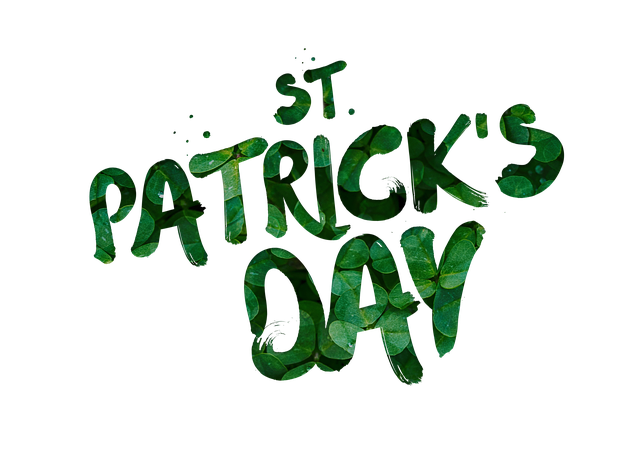On St. Patrick's Day, it's generally advised not to wear orange. This color is historically associated with Irish Protestants and the unionist movement, while St. Patrick's Day, rooted in Irish Catholic traditions, celebrates Irish culture and heritage. Wearing orange can be seen as a political statement or as contrary to the spirit of the holiday, which is why green is the preferred color. Green symbolizes Irish nationalism, the lush landscapes of Ireland, and the shamrock associated with St. Patrick. To fully embrace the holiday, wearing green is the best choice.

Why Is It Bad To Wear Orange on St Patrick’s Day?
It's considered bad to wear orange on St. Patrick's Day because the color orange is associated with the Protestant community in Ireland, particularly with the Orange Order, which commemorates the victory of Protestant King William of Orange over the Catholic King James II in the Battle of the Boyne in 1690.
St. Patrick's Day, on the other hand, is a celebration of Irish culture and heritage, which is deeply connected to the Catholic tradition and the color green. Wearing orange on this day can be seen as disrespectful or politically charged, as it symbolizes a different and sometimes opposing part of Ireland's history. To honor the holiday's cultural and religious roots, it's best to wear green instead.

What Color Should You Wear on St. Patrick's Day?
You should wear green on St. Patrick's Day. Green is the color most closely associated with Ireland and many wear green on St. Patrick's Day, symbolizing the country's lush landscapes, Irish nationalism, and the shamrock, which St. Patrick used to explain the Holy Trinity. Wearing green on this day shows your connection to Irish culture and the holiday’s traditions. Whether it’s a green shirt, hat, or even accessories, incorporating this color into your outfit is the best way to celebrate St. Patrick's Day.
Symbol of Ireland
Ireland's lush, green landscapes are one of its most defining features, earning it the nickname "The Emerald Isle." The color green has become synonymous with Ireland and is used to represent the country's natural beauty and cultural heritage. On St. Patrick's Day, wearing green is a way to celebrate Ireland what green represents and its unique identity.
Association with Irish Nationalism
Green has been a symbol of Irish nationalism for centuries. During the 18th and 19th centuries, the colour green was adopted by Irish rebels and nationalists as a symbol of their resistance against British rule. The color green was worn by members of the Society of United Irishmen during the Irish Rebellion of 1798, a key moment in Ireland's fight for independence.
The Influence of the Shamrock
The shamrock, a green, three-leafed plant, is another reason why wearing blue and green is associated with St. Patrick's Day. According to legend, St. Patrick used the shamrock to explain the concept of the Holy Trinity to the Irish people. The shamrock has since become a symbol of Ireland and is often worn on St. Patrick's Day as a token of Irish heritage.
Why Is St. Patrick's Day Celebrated?
St. Patrick's Day is celebrated annually on March 17th to honor Saint Patrick, the patron saint of Ireland. The day commemorates Saint Patrick's efforts to spread the religion of Christianity in Ireland during the 5th century. Over the course of time, St. Patrick's Day has evolved from a religious observance into a global celebration of Irish culture, with festivities taking place around the world.
Saint Patrick was born in Roman Britain but was kidnapped and brought to Ireland as a slave at the age of 16. He eventually escaped but later returned to Ireland as a missionary. Saint Patrick is credited with converting the Irish people to Christianity, and his teachings played a significant role in shaping Irish culture and identity. According to legend, Saint Patrick used the shamrock, a three-leafed plant, to explain the Holy Trinity to the Irish people, which is why the shamrock is now a symbol of St. Patrick's Day.
Initially, St. Patrick's Day was a religious holiday observed by attending church services and feasting. It wasn’t until the 18th century that the holiday began to take on its more festive and secular characteristics, particularly among Irish immigrants in the United States. Today, St. Patrick’s Day is celebrated with parades, music, dancing, and wearing green clothing. The day has become a symbol of Irish pride, tradition and cultural heritage.
Tips for Dressing on St. Patrick's Day
When it comes to dressing for St. Patrick's Day, there are a few tips to keep in mind to ensure that you look festive, stay comfortable, and avoid any potential cultural faux pas.
Embrace the Green
Incorporating green into your outfit is the most important tip for dressing on St. Patrick's Day. Whether you choose to just wear green with a green shirt, dress, hat, or accessories, embracing the green will ensure that you're in the spirit of the holiday. If you don't have green clothing, even a small green accessory, like a scarf or a pin, can suffice.
Avoid Wearing Orange
As discussed earlier, it's best to avoid wearing orange on St. Patrick's Day due to its historical and political associations. Stick with green, or sky blue, or other neutral colors to show your appreciation for Irish culture without inadvertently making a political statement.
Consider Wearing Irish-Inspired Clothing
If you want to go all out, consider wearing clothing inspired by traditional Irish attire. For example, you could wear a green color blue kilt, a shamrock-themed sweater, or an Aran sweater, which is a type of woolen garment that originated in the Aran Islands off the west coast of Ireland.
Dress Comfortably
St. Patrick's Day often involves a lot of walking, whether you're attending a parade, exploring a festival, or simply celebrating with friends. Make sure to wear comfortable clothing and shoes that will keep you comfortable throughout the day. If the weather is cool, layer your clothing to stay warm while still showcasing your green.
Add Some Fun Accessories
St. Patrick's Day is a festive holiday, so don't be afraid to have a little fun with your outfit. Consider adding some playful accessories, like shamrock-shaped sunglasses, green beads, or a leprechaun hat. These accessories can add a touch of whimsy original color to your outfit and help you fully embrace the spirit of the day.
Be Mindful of the Weather
Depending on where you're celebrating St. Patrick's Day, the weather can be unpredictable. In some places, March can still be quite chilly, so be sure to check the forecast and dress appropriately. If you're in a colder climate, consider wearing a green coat or scarf to stay warm while still looking festive.
Respect Cultural Sensitivities
While St. Patrick's Day is a time for celebration, it's important to be respectful of Irish culture and traditions. Avoid wearing anything that could be considered offensive or disrespectful, such as stereotypical costumes or caricatures of Irish culture. Instead, focus on celebrating the holiday in a way that honors and appreciates the rich history and traditions of the country of Ireland.
FAQs On What Color Should You Not Wear on St. Patrick's Day?
1. Why is it considered inappropriate to wear orange on St. Patrick's Day?
Wearing the color orange on St. Patrick's Day is considered inappropriate due to its historical association with Irish Protestants and the unionist movement. The color green, on the other hand, is linked to Irish Catholics and nationalism. Since wearing green on St. Patrick's Day is closely tied to Irish Catholic traditions, wearing orange can be seen as a political statement that contradicts the spirit of the holiday.
2. What color should I wear on St. Patrick's Day?
Green is the most appropriate and widely accepted color to wear on St. Patrick's Day. It symbolizes Irish culture, nationalism, and the lush landscapes of Ireland. Wearing green allows you to participate in the celebration and show your appreciation for Irish heritage.
3. Can I wear other colors besides green on St. Patrick's Day?
While green is the preferred color for St. Patrick's Day, you can also wear other neutral colors, such as blue, white or black, as long as they don’t carry any significant cultural or political connotations. However, adding a touch of green, even in the form of an accessory, is a great way to join in the festivities.
4. What are some traditional Irish clothing items I can wear on St. Patrick's Day?
Traditional Irish clothing items that you can wear on St. Patrick's Day include Aran sweaters, which are made from wool and feature intricate patterns, and kilts, which are commonly worn in both Ireland and Scotland. You can also wear clothing or accessories featuring shamrocks, the symbol of St. Patrick's Day.
5. Is it okay to wear green if I'm not Irish?
Yes, it is perfectly okay to wear green on St. Patrick's Day, even if you’re not Irish. The holiday has become a global celebration of Irish culture, and wearing green is a way to show your support and appreciation for the festivities, regardless of your background.
